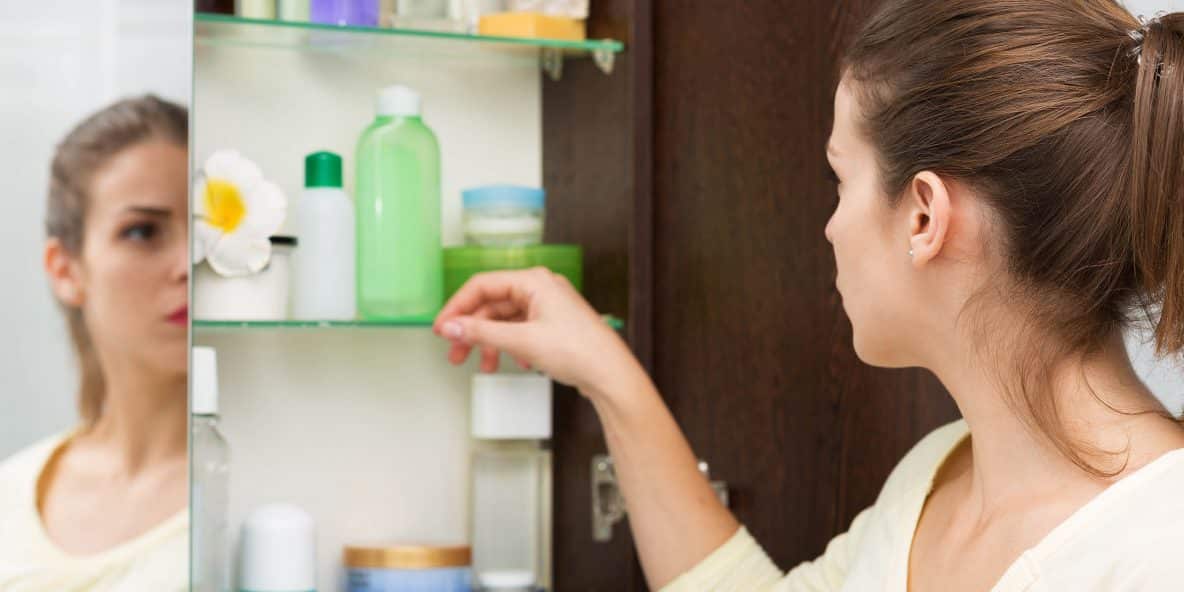Is Your Teen Hiding Drugs Secret Stash Spots That Might Surprise You
Here at FHE Health, our team of addiction specialists has worked with substance abusers of all ages, including young adults who use everything from marijuana to prescription pills, heroin, and poppers. We know that if you have a child hiding drugs, chances are good theyll put a lot of effort into making sure their stash isnt anywhere that you might expect to find it.
Some of the more creative places where you should look if you think you have a son or daughter hiding drugs include any type of bottle that means shampoo bottles, vitamin bottles, and hair care products since these are commonly found in any young persons bedroom, bathroom, or school locker. The same goes for makeup containers like lipstick tubes, deodorant, and body wash as well.
Holes in mattresses, box springs, and pillows also make for popular hiding spots, as do reusable water bottles and coffee mugs. In fact, theres a number of online companies that sell small safes that are designed to look and feel just like common household items like dictionaries, pop cans, and candy boxes, so if you notice a container that seems a little suspicious, check it out.
If your teen is involved in sports, take a good look in their gym bag. Some drug users store their stash inside of old baseball gloves, stuffed down used sports socks, and yes, even inside of jock straps this is in an effort to use the gym locker smell to conceal the odor of strong-smelling drugs like marijuana.
Reasons That People Stay In The Dark About Their Substance Use
Addiction carries a stigma. The public eye sees it as a weakness in character rather than a psychological illness. For instance, a recent study revealed that the stigma of an addiction carries more weight than the stigma of mental illness. It appears that many people believe that an addiction is an indication of a personal flaw. This is one barrier that frequently stands in the way of seeking help or telling others about whats going on.
People dont want to shame the family. According to Substance Abuse and Mental Health Services Administration , approximately 2.7 million women in the United States, many of whom do not receive treatment because their social roles as mothers and nurturers. Seeking substance abuse treatment would highlight the stigma of alcohol or drug use in their families and communities. The shame that comes with admitting drug use often gets in the way of tending to their addiction, even if it becomes destructive.
There might be legal consequences. Criminal charges and other forms of legal punishment may come with admitting to the illegal use of certain drugs. Because of these obstacles, there are a large number of men and women who desperately need professional help but dont seek treatment to avoid legal trouble. As a result, they end up in dangerous situations such as overdosing and losing their lives.
What An Enabler Does
When it comes down to it, an enabler is only driving their loved ones addiction further. Even though this isnt their goal, its the effect that comes from making excuses and letting things go unchecked. For instance, an enabler wouldnt be able to properly setup an intervention, even after admitting to the fact that they are an enabler, and doing everything in their power to right their wrongs. You would need a professional interventionist to help not just the addict, but to help the entire family/circle of friends to create the proper environment to help their loved one, even after the stages of detox and rehab. For more information on interventions and treatment in general, contact a treatment provider today.
- About
Jeffrey Juergens earned his Bachelors and Juris Doctor from the University of Florida. Jeffreys desire to help others led him to focus on economic and social development and policy making. After graduation, he decided to pursue his passion of writing and editing. Jeffreys mission is to educate and inform the public on addiction issues and help those in need of treatment find the best option for them.
Clinically Reviewed:
David Hampton
- About
All of the information on this page has been reviewed and verified by a certified addiction professional.
Don’t Miss: What To Do When Child Is Addicted To Video Games
Other Possible Signs Of Iv Drug Use
Its important that you consider all the other possible signs of addiction to meth or other IV drugs. Those who use IV drugs will often wear clothing designed to hide infection sites.
Unseasonable Clothing
During the summer months, many people look forward to wearing tank tops and shorts to beat the heat. Those with an IV drug addiction frequently do not wear the same clothing because they risk showing signs. They might wear long pants that reach down to their ankles and shirts with long sleeves that cover their arms even in the middle of a hot day.
Sudden Weight Loss
Sudden and quick weight loss is another sign of IV drug use. Drugs such as meth and heroin provide more energy than normal, resulting in staying up for hours and even days at a time during a binge. The extra energy received from the drugs burns calories resulting in losing a significant amount of weight. You might find that a close friend or family member suddenly lost a large amount of weight within a few months. Sometimes the weight loss can result in people looking like skin and bones and/or have heads that appear too large for their bodies.
Routine Changes
Another sign to look for is a change in appetite, which often goes along with a change in sleep patterns. Drugs can cause major changes in eating, drinking and sleeping patterns. They may only want to watch television or spend time with other people who also use. Addiction can also result in spending long hours awake and alert.
Behavioral Signs Of Heroin Abuse

Another one of the biggest signs of heroin addiction is drastic changes in your loved ones behavior. Although addiction is a chemical dependence, it usually changes the users behavior as well. These changes become more dramatic as the addiction becomes more severe.
Mood Swings | One of the many signs and symptoms of heroin addiction is mood swings. Users often find themselves aggravated easily and will take it out on their loved ones with angry outbursts. This could be a sign of withdrawal and/or symptoms of heroin addiction. They may also experience feelings of depression or periods of excitability while high. It can be difficult to communicate with the addict because of these mood swings, so it may be best to ask for help.
Lack of Hygiene | It requires a conscious effort to manage your personal hygiene unfortunately, many drug users will start to slack off when it comes to this as a result of their preoccupied or distracted state of mind. If your loved one was someone who routinely takes care of themselves, and all of a sudden youre noticing a change in their priorities about their hygiene, its well worth looking into. If its not relative to drug addiction, it might be a sign of depression, which can, in fact, be a segue to drug use. Either way, ignoring this very noticeable change for the worse isnt a good idea.
You May Like: Can You Get Addicted To Advil
Where Do People Buy Paraphernalia
Drug paraphernalia is usually purchased online. Online shopping is popular with people using drugs because it offers them a fast and easy way to privately buy paraphernalia. A variety of websites dedicate themselves to selling paraphernalia, and some can even be found on creative and craft websites like Etsy.
Some items are also available at brick-and-mortar locations like tobacco shops, head shops, novelty stores, gift shops and gas stations. Head-shop stores are mostly dedicated to selling drug paraphernalia, particularly items to smoke marijuana with. Although selling drug paraphernalia is illegal, the stores operate by advertising the items as use with tobacco only.
They Exhibit Sudden Physical Changes
Individuals who are abusing or addiction to substances may have noticeable physical symptoms of drug or alcohol abuse. As their addiction progresses, these physical signs will likely be more easy to see by others.
Common physical changes that result from substance abuse include:
- weight loss or gain
- sores or track marks on the skin
- neglected personal hygiene
- frequent bloody nose
- nasal congestion
Different drugs can cause different physical changes in a person. If you notice drastic physical differences in your loved one that are seemingly out of the blue, it may be a sign that he or she is dealing with addiction.
Read Also: What Is Drug Dependence And Addiction
How To Recognize The Manipulation Of A Drug Addict
Anyone who has a close friend or relative that has struggled with a substance use disorder knows all too well about the manipulative ways of a person who is controlled by their addiction. These behaviors cause extreme heartache and pain and they even have the power to break up families and end marriages.
Amid a relationship that has been damaged by addiction, its not always easy to identify manipulative behaviors, let alone how to respond in a healthy way. However, if you can take a step back and peel back the filter from your eyes, you might just see that your loved one is manipulating you into fueling his or her addiction.
To Hide Their Addiction From Others
One of the outcomes of addiction is that those affected often lie. They lie to others about the fact theyre addicted, what theyre using, how much they use, how much they spend to support their habit and where they buy their drug of choice. With lying being such an ingrained part of the disease, it makes sense that they would take steps to hide their addiction from others. If theyre not using drugs, then it would logically follow that they would have no reason to have drugs in their possession.
Read Also: How Do You Help Someone With An Addiction
Matrix Intensive Outpatient Treatment For People With Stimulant Use Disorders: Counselor’s Family Education Manual W/cd
This comprehensive kit provides substance use disorder treatment professionals with a year-long intensive outpatient treatment model. Professionals can use this model when treating clients who are dependent on stimulant drugs, such as methamphetamine and cocaine. Access family education sessions and handouts.
Troubling Behaviors Related To Addiction
According to the American Society of Addiction Medicine, one of the defining features of addiction is that it leads people to engage in compulsive behaviors that persist even when they lead to negative and harmful consequences. While addiction is not an excuse for these behaviors, it does help explain why they happen.
Recommended Reading: Is Xanax Addictive Mayo Clinic
Prop Soda Bottles Cans Or Candy Containers
A quick search on the internet will turn up tons of fake items used to conceal or hide drugs. Things like unopened soda bottles, soda cans, or candy boxes can actually be stash spots for drugs. If you see the same soda bottle all the time or the same candy wrapper, try opening it up to see what’s really inside. If it is a fake item, it will usually have a place to twist open, revealing a hidden compartment.
Where To Search For Hidden Drugs Outside The Home

A teen who is hiding drugs might decide its safer to stash their substances somewhere outside the home since this might make it tough for you and the authorities to actually connect your child to the drugs.
Look around your yard for places where drugs could be hidden, such as covered electrical outlets, inside of the recycling bin, or in your garden planters. If youve noticed your teen suddenly taking an interest in their childhood playhouse, you should take the time to inspect the area for hidden drugs.
Its also common for youth who are using drugs to conceal items on their route to and from school in places like parking lots, playgrounds, and neighboring properties.
Read Also: How To Help Someone With Heroin Addiction
Behavioral Or Personality Changes That Are Typical In Heroin Addicts
The behavioral changes that a heroin addict displays are fairly obvious. Someone abusing heroin is going to lose a part of their integral character. They will likely change in drastic ways as though theyre going through a personality overhaul in the most negative way. Here are some of the behaviors that can indicate heroin addiction:
Top 10 Best Hiding Places For Drugs
Individuals who really want to hide their addiction find the strangest and most secretive places to hide drugs at home. Some of the spots you may not have considered looking for hidden drugs are:
Read Also: Can You Get Addicted To Melatonin
Common Hiding Spots For Drugs: A Guide For Parents
If you are a parent and are worried because your child has been acting differently than usual, you may be wondering how to interpret their changes in mood or a new group of friends. Depending on the circumstances and your observations, you might even believe its time to look for stash spots for drugs around the home or in your childs space. If thats the case, this guide will give you an idea of some common hiding places.
Loss Of Interest In Things That Used To Bring Joy
Did you used to love spending a lazy Sunday afternoon reading a book or painting? Or maybe your loved one used to enjoy whipping up cookies and cupcakes for events, but it has been months since youve enjoyed one of their confections?
A drug addiction takes up a lot of time, and there is a lot of concern over what will happen if they run out. With such a heavy preoccupation with a drug, its hard to find time for anything else. Depression is another possibility, since it also results in loss of interest with favored activities, so use the other items listed here to determine what the cause may be.
Don’t Miss: Can You Get Addicted To Antidepressants
They Experience Financial Trouble Or Property Loss
While many people will experience financial hardship at some point in their lives, individuals who are addicted to drugs or alcohol often go through sudden and seemingly unexplainable financial difficulties. This is due to a persons need to continue to obtain drugs or alcohol despite the inability to responsibly pay for them. People who are addicted to substances may choose to buy drugs or alcohol despite their upcoming bills or may sell off their personal property to be able to afford substances.
Additionally, a person struggling with addiction may steal or borrow money from loved ones. They may also steal drugs from friends or family in an attempt to get their next fix.
Reclusive And Private Behavior
Many people trying to hide their substance use will become private with their actions. This is often a tell-tale sign that an individual is struggling with addiction. They are experiencing shame for their substance use but cant stop using because addiction has taken control. If a loved one is spending an excessive amount of time in their room and acting strange when confronted, they may be struggling with addiction.
Recommended Reading: How To Cure Marijuana Addiction
Preoccupation With Your Drug Of Choice
As a drug addiction progresses, its normal to become more and more preoccupied with your drug of choice. That includes things like thinking about the next time you will take the drug, what youre going to do to make sure you dont run out so you can avoid withdrawal symptoms, and where youre going to get the money in order to buy more. When drug use becomes a near-constant thought, that is perhaps the most tell-tale symptom of drug addiction.
To someone looking in at an addiction from the outside, it may mean that a friend or loved one is suddenly unavailable during certain times of the day. They may decline invitations they once would have accepted, or they may spend time with new friends that youve never met. This is a good indicator that they are spending their time with other drug users.
What Help Is There For The Addict

An addicted person may not always realize that they are manipulating you or understand why their behavior is unacceptable. This may be due to the physical and psychological effects of the drugs. However, in many instances, manipulative behavior is also a product of complex life experiences or trauma, resulting in an inability to communicate effectively, deal with stress, or establish healthy relationships.
For these reasons, many drug detox and rehab centers provide trauma-informed addiction treatment that addresses the social, psychological, and behavioral aspects of addiction. Although quitting cold turkey may help the person overcome their physical dependence on a drug, it wont address any of the behavioral and cognitive problems associated with addiction.
Medical drug detox is often recommended for people with severe addictions,4 as it provides round-the-clock observation and medication-assisted treatment for the most comfortable and safe detox experience. Once the person has completed the withdrawal process, begins to heal physically, and has a clear mind, he or she may choose to continue addiction treatment at a rehab center, where therapies like cognitive behavioral therapy and EMDR therapy can be used to chip away at the trauma and behavioral problems that have contributed to the addiction.
References:
Recommended Reading: How To Kick Alcohol Addiction
